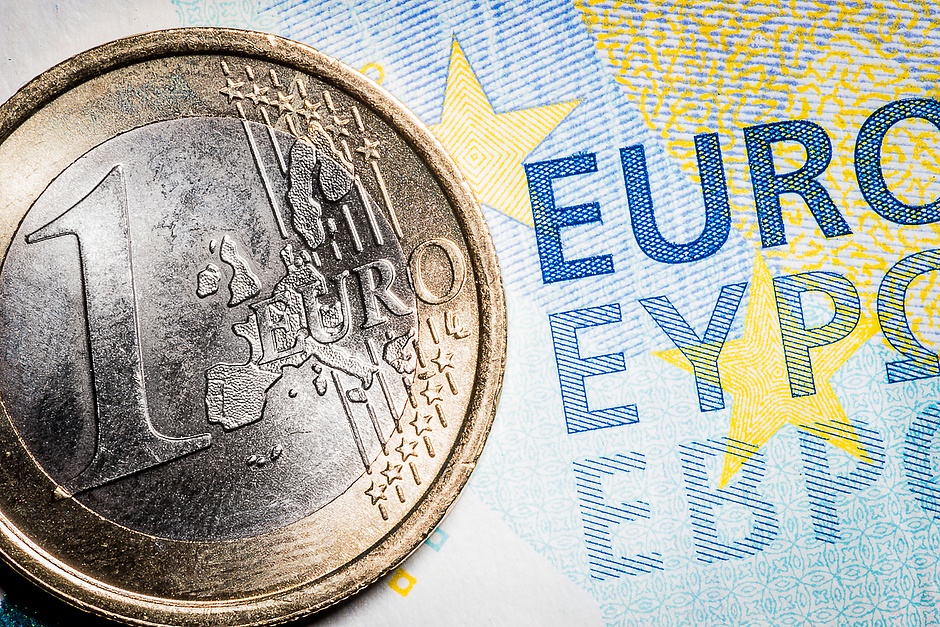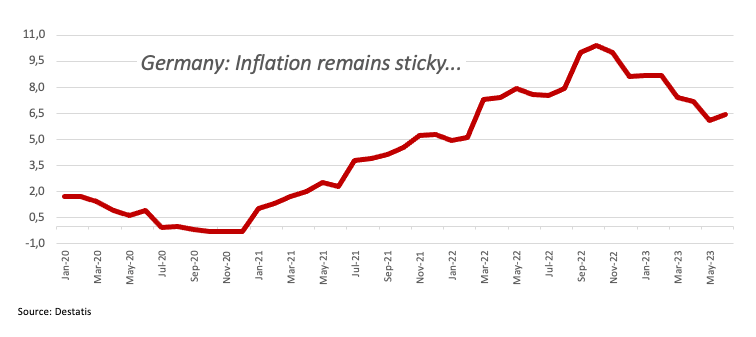Euro accelerates losses to weekly lows around 1.0860
- Euro now loses further ground vs. the US Dollar.
- Stocks in Europe en route to close the session with decent gains.
- EUR/USD loses the grip and retreats to new weekly lows.
- Flash inflation figures in Germany surprised to the upside.
- Firmer-than-expected US Q1 GDP, weekly Claims prop up the Greenback.
- Chief Powell suggested that more job needs to be done regarding inflation.

The Euro (EUR) now rapidly gives away the earlier optimism and forces EUR/USD to accelerate the breakdown of the 1.0900 hurdle and print new lows for the current week in the 1.0860 zone ono Thursday.
Indeed, the pair makes another U-turn, this time to the downside, as better-than-estimated results from US fundamentals lend unexpected legs to the Greenback and lift the USD Index (DXY) to new 2-week peaks near 103.40.
The now sour sentiment in the risk complex comes after central bank chiefs expressed hawkish sentiments at the ECB Forum in Portugal on Wednesday, highlighting that current policy measures are still not adequately restrictive. Despite this, the market appears to be at ease with the belief that the Federal Reserve (Fed) will implement two additional interest rate hikes, potentially back-to-back, signalling the nearing conclusion of the tightening cycle.
Likewise, although the European Central Bank (ECB) holds a hawkish stance and plans to raise rates in July, and potentially once more thereafter, concerns arise due to the economic decline and credit data, which restrict expectations regarding the extent and duration of the ECB's policy rate increases.
The potential future actions of the Fed and the ECB in normalizing their monetary policies remain a topic of ongoing debate. This discussion takes place against the backdrop of increasing speculation about an economic slowdown on both sides of the Atlantic.
In the domestic calendar, advanced inflation figures in Spain expect the CPI to rise 1.9% in June, while the Economic Sentiment and the final print of the Consumer Confidence in the broader euro area eased to 95.3 and held steady at -16.1, respectively, in June. Finally, preliminary inflation figures in Germany see the CPI rising 6.4% in June vs. the same month of 2022.
In the US, the final prints of the Q1 Growth Rate showed the economy expanded 2.0% vs. a 1.4% expansion projected and Initial Jobless Claims increased by 239K in the week to June 24. Additionally, Pending Home Sales shrank 2.7% MoM in May and 2.22% over the last twelve months. Later in the session, the speech by Atlanta Fed Raphael Bostic (2024 voter, hawk) will complete the daily docket.
Daily digest market movers: Euro loses further shine on USD strength
- The Euro weakens on the back of extra buying pressure in USD.
- Germany’s flash CPI for the month of June surpasses consensus.
- The European Council meets in Brussels.
- Fed's Powell said there is still job to do regarding US inflation.
- The US Dollar reclaims further ground on the back of solid data.
- ECB’s Mario Centeno (dove) suggested a pause should be close.
- Atlanta Fed Raphael Bostic advocated for some pause to assess the impact of policy so far.
Technical Analysis: Euro risks a deeper pullback to the 100-day SMA
EUR/USD remains under pressure and retreats to new weekly lows in the 1.0860 zone on Thursday. The loss of this region exposes a deeper pullback to the June low at 1.0844 (June 23) ahead of the provisional 100-day SMA at 1.0815. South from here emerges the May low of 1.0635 (May 31) prior to the March low of 1.0516 (March 15) and the 2023 low of 1.0481 (January 6).
If bulls regains the upper hand, the next hurdle is then expected at the June peak of 1.1012 (June 22) prior to the 2023 high of 1.1095 (April 26), which is closely followed by the round level of 1.1100. North from here emerges the weekly top of 1.1184 (March 31, 2022), which is supported by the 200-week SMA at 1.1181, just before another round level at 1.1200.
The constructive view of EUR/USD appears unchanged as long as the pair trades above the crucial 200-day SMA, today at 1.0583.
Euro FAQs
What is the Euro?
The Euro is the currency for the 20 European Union countries that belong to the Eurozone. It is the second most heavily traded currency in the world behind the US Dollar. In 2022, it accounted for 31% of all foreign exchange transactions, with an average daily turnover of over $2.2 trillion a day.
EUR/USD is the most heavily traded currency pair in the world, accounting for an estimated 30% off all transactions, followed by EUR/JPY (4%), EUR/GBP (3%) and EUR/AUD (2%).
What is the ECB and how does it impact the Euro?
The European Central Bank (ECB) in Frankfurt, Germany, is the reserve bank for the Eurozone. The ECB sets interest rates and manages monetary policy.
The ECB’s primary mandate is to maintain price stability, which means either controlling inflation or stimulating growth. Its primary tool is the raising or lowering of interest rates. Relatively high interest rates – or the expectation of higher rates – will usually benefit the Euro and vice versa.
The ECB Governing Council makes monetary policy decisions at meetings held eight times a year. Decisions are made by heads of the Eurozone national banks and six permanent members, including the President of the ECB, Christine Lagarde.
How does inflation data impact the value of the Euro?
Eurozone inflation data, measured by the Harmonized Index of Consumer Prices (HICP), is an important econometric for the Euro. If inflation rises more than expected, especially if above the ECB’s 2% target, it obliges the ECB to raise interest rates to bring it back under control.
Relatively high interest rates compared to its counterparts will usually benefit the Euro, as it makes the region more attractive as a place for global investors to park their money.
How does economic data influence the value of the Euro?
Data releases gauge the health of the economy and can impact on the Euro. Indicators such as GDP, Manufacturing and Services PMIs, employment, and consumer sentiment surveys can all influence the direction of the single currency.
A strong economy is good for the Euro. Not only does it attract more foreign investment but it may encourage the ECB to put up interest rates, which will directly strengthen the Euro. Otherwise, if economic data is weak, the Euro is likely to fall.
Economic data for the four largest economies in the euro area (Germany, France, Italy and Spain) are especially significant, as they account for 75% of the Eurozone’s economy.
How does the Trade Balance impact the Euro?
Another significant data release for the Euro is the Trade Balance. This indicator measures the difference between what a country earns from its exports and what it spends on imports over a given period.
If a country produces highly sought after exports then its currency will gain in value purely from the extra demand created from foreign buyers seeking to purchase these goods. Therefore, a positive net Trade Balance strengthens a currency and vice versa for a negative balance.
Author

Pablo Piovano
FXStreet
Born and bred in Argentina, Pablo has been carrying on with his passion for FX markets and trading since his first college years.


















